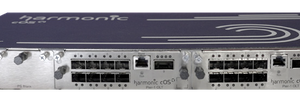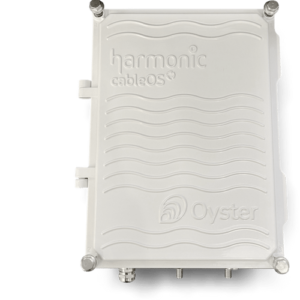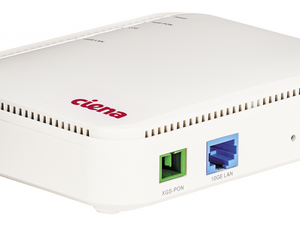(Part Number: 3803) – 3803Multi-Port and ATA XGS-PON ONT – Actives – Residential CPE – ONTs – Ciena
Call for Price
This product requires special shipping arrangements. Please Use the "ADD TO QUOTE BUTTON" or call us at (866) 650-3282 for more information.
CompareFeatures:
- Compliant with ITU-T G.9807.1 specifications
- Cost-effective multi-port multi-GbE services
- Support for voice (RJ-11) with integrated ATA
- Small desktop package perfect for residential, MDU, and SMB/SME
- Embedded XGS-PON and optics
- Operates at commercial temperature range (0°C to +40°C)
- Router/gateway mode option for the Ethernet ports
Ciena’s 3803 Multi-Port and ATA XGS-PON Optical Network Unit (ONU) is purpose-built for residential, multiple-dwelling units (MDU), small offices/home offices (SOHO), and small to medium-sized businesses/enterprises (SMB/SME). Its multiport design and support for analog voice make it an ideal fit for residential and business applications inside home or small office locations.
The 3803 Multi-Port and ATA XGS-PON ONU has multiple ports and an integrated analog terminal adapter (ATA). It is compliant with ITU-T G.9807.1 (XGS-PON) and supports symmetrical 10 Gb/s downstream and upstream connectivity. This desktop ONU comes with built-in XGS-PON optics and media access control (MAC), an Ethernet switch, and support for multiple ports, including:
- 4 x 100M/1GbE (RJ-45)
- 1 x 1/2.5/5/10GbE (RJ-45)
- 1 x FXS voice port (RJ-11)
- 1 x XGS-PON (SC/APC fiber connector)
With low total cost of ownership (TCO) in mind and operating over shared f iber, this desktop ONU reduces edge transport as well as switching and routing costs, footprint, and power consumption in alignment with highdensity optical line terminal (OLT) and micro-OLT (uOLT) platforms.
Higher-bandwidth service delivery
Demand for bandwidth continues to grow unabated, while remote and hybrid work models have become the norm. Additionally, SOHO and SMB/SME continue to play a pivotal role in job creation while fostering economic growth.
The challenge for network operators—and the key to customer retention and continued growth – is to offer higher bandwidth with a choice of interfaces while still supporting legacy services like analog voice, which is a requirement for operators participating in funding programs such as the Rural Digital Opportunity Fund (RDOF). Passive optical networks (PONs) have become extremely popular by cost-effectively addressing ongoing surges in demand for IP services, driving operators to XGS-PON as older PON technologies can no longer effectively address network growth.









































